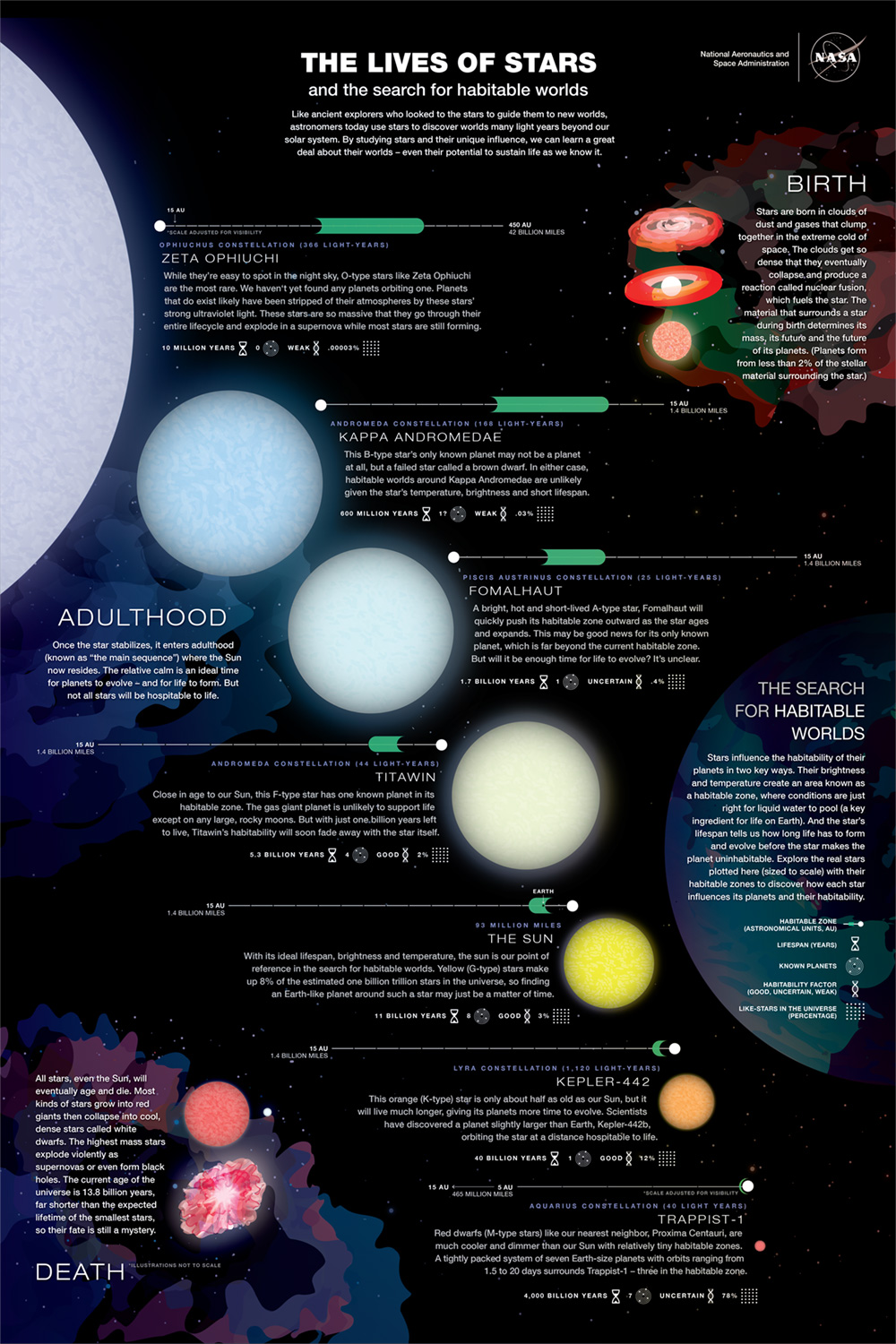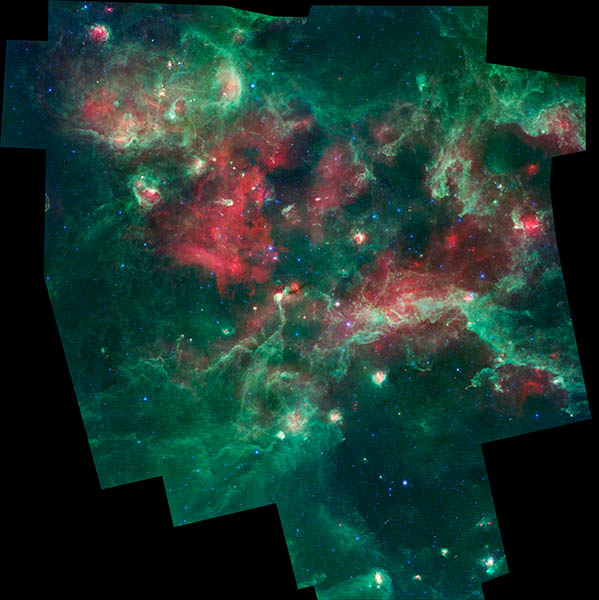Chapter 1 – A Star is Born
A Star Is Born
It all begins with an unimaginably cold cloud. This cloud contains the seeds of whole new worlds – stars and planets about to be born.
Molecules of hydrogen and helium gas, which normally zip around at high speeds, slow down and clump together because of gravity. Tiny grains of silicates, iron and carbon-rich material — together classified simply as "dust" — send some of the gas’s energy back out into space, making the cloud even colder. The dust grains spiral into the central knot of matter, like water running down a drain.
As this pocket of the cloud contracts and thickens, a bright, hot ball begins to form at the center as more gas and dust are pulled in. Gravity is waging a battle against the pressure of gas and magnetic fields, and gravity is winning.
While the infant star takes shape, the material spiraling inward flattens into a pancake-like structure known as an accretion disk.
Why does this happen? The gravitational tugs of the galaxy’s billions of stars may have accelerated and shocked the gas. Or, maybe two clouds are bumping into each other, causing pockets of gas to coalesce. But sometimes, the catastrophic explosion of a massive star drives strong winds of material into a star-forming cloud — a death resulting in a new birth.
Q. How do we know what kind of star will form?
A. That depends on the material that is available.
Mysteriously, in our galaxy and probably most others, the likeliest type of star to form is almost too small to sustain itself. Red dwarfs, which can be between one-thirteenth to one-half the mass of the Sun, represent three-quarters of the stars in the Milky Way. Any smaller than this, and hydrogen cannot fuse in its core – the dominant process powering most stars. Red dwarf stars burn so slowly that their lifetimes will be longer than that of the present-day universe.

Sun-like stars are more rare, although still represent 8 percent of the galaxy. Most rare are the very massive stars, which can weigh as much as 150 suns and only live a few million years. "Those stars are so big, so luminous and so short-lived, that astronomers are observing these stars in their pulsating, mass-ejecting death throes, while their low-mass stellar siblings are still in the process of forming," Mamajek said.
A young star is called a "protostar" until it can power itself with hydrogen fusion reactions, and high temperature is crucial to that transition. As matter falls in faster and faster, and the ball of gas at the center gets smaller and more compact, the tug-of-war between gravity and other pressures heats up the infant star. Even hundreds of thousands of degrees is not enough. The core of the star must get to about 10 million degrees before it becomes a hydrogen-burning machine. To be a bona fide star, it must spontaneously fuse hydrogen atoms to form helium, releasing enormous amounts of energy. This energy stabilizes the star's core, such that it stops contracting. This whole process can take about 40 million years.
'Raining' Stars
The same process may be happening in dozens, hundreds or even thousands of places in the same molecular cloud, becoming a glittering stellar nursery.
"It's like rain in a cloud on Earth," said Eric Mamajek, deputy program scientist of NASA’s Exoplanet Exploration Program. "If you've got the combination of physical conditions to form a drop of rain, chances are you're next to parcels of gas that have the similarly ripe conditions right for producing lots and lots and lots of rain."
In this way, molecular clouds are like Earth clouds, and the raindrops are like stars. The gas from these clouds can collapse and fragment, forming big batches of baby stars. So, stars tend to form in big groups.
NEWS FLASH: A stellar nursery
Cygnus X is one of the most active regions in the Milky Way hatching baby stars. Some 4,500 light-years away, thousands of stars are being cradled in a violently turbulent cloud of gas and dust.
NASA’s Spitzer Space Telescope captured this image in infrared light that reveals cavities in the cloud, carved out by the violent outbursts of massive stars. The radiation and winds from these massive stars can rip star-forming material apart, but also trigger the birth of new stars. In this image, the color green highlights dust tendrils, while red shows possibly cooler types of dust and ionized gas from nearby massive stars.
Scientists say most stars formed in large regions like Cygnus X, and then move away from each other over time. Our Sun may have similarly grown up close to other new stars before it left the nest.

Now that we have our stars, how will they get to have planets orbiting them? Check out Chapter 2 to find out.
